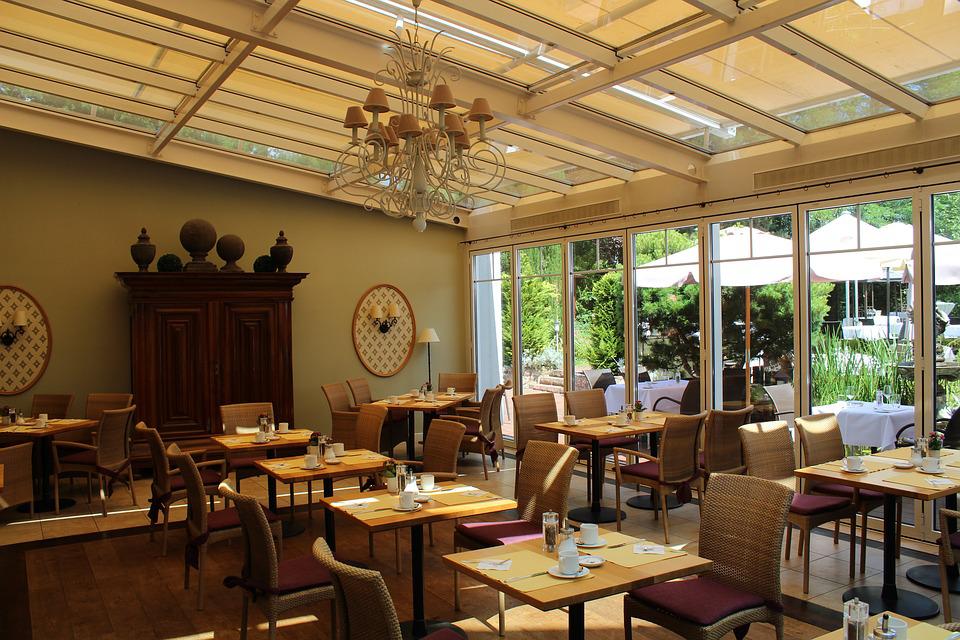
Restaurant
A successful restaurant needs more than delectable food and exemplary customer service. Streamlining logistics and operations is crucial for smooth operation. With each passing day, competition is increasing, which raises customer expectations higher than ever. Hence, restaurant managers and owners should optimize their operations to thrive.
A National Restaurant Association study found that 80% of restaurants depend on the latest technologies for efficient operations. Blending powerful tools with the right support for every staff member can help restaurants succeed in a competitive environment.
Maintaining efficiency in restaurant workflow is necessary, from front-end to back-end operations. Any drop in efficiency might affect profits and prohibit business expansion.
Food consulting companies can play a crucial role in streamlining restaurant operations. These companies specialize in providing expert advice and solutions to optimize various aspects of the business, from menu planning to inventory management. By leveraging their industry expertise and experience, food consultants can help restaurants identify inefficiencies, streamline processes, and ultimately increase profitability.
In this article, we will discuss effective strategies to implement in 2023 to enhance your restaurant’s operations, that will help you stay on par with or ahead of your competitors.
5 Effective Best Strategies for 2023
In 2023, nearly 47% of restaurant owners expect more competition compared to last year. They must stay equipped with strategies that will help combat this fierce competition head-on and make profits.
The best strategies include:
Evaluating Existing Operations
It is necessary to create goals that align with your business. Deciding what your restaurant should focus on can be challenging. You can begin by defining what success means for you being aware of your market position. You need to identify a few concrete metrics that define success for you.
For instance, if a customer places an online order that arrives within 15 minutes, the food will feel fresh. Think whether this is a parameter on which you want to judge the success of your business.
In the United States, almost 75% of fast-food diners will not wait beyond 5 minutes for their food. Hence, when you are planning to expand your restaurant business, you need to keep this factor in mind and work accordingly.
Similarly, if servers usher in customers with a warm welcome and greet them by their name once they enter the restaurant, it indicates top-notch customer service. Therefore, analyzing your current situation will help resolve the prominent issues your restaurant might encounter from time to time.
Investing In a Restaurant Management Solution
A restaurant management platform is a compact software solution designed to automate and streamline multiple aspects of restaurant operations.
In today’s digital era, restaurants must invest in this software because it can organize data, streamline operations, and improve decision-making. The software can help to maximize effectiveness in the restaurant by automating mundane tasks, such as tracking expenses and ordering inventory.
When specific processes are automated, restaurant owners can concentrate on other aspects of business operation, rather than managing tasks manually. This improves workflow and reduces manual labor. Hence, restaurant owners can focus on curating new menu items or marketing campaigns, which increase productivity.
CheddrSuite states that leading names in restaurant management solutions provide advanced analytics features, enabling real-time performance data tracking. Restaurant owners can use this data to optimize staffing levels and gain a better understanding of business trends.
Customer Loyalty Programs
Implementing customer loyalty programs improves customer retention. Restaurants should provide personalized promotions and rewards depending on customer preference and their buying history.
Ross Kernez, the director of HealthPlanOne, asserts that it is essential to identify and appreciate your customers’ support to reinforce their loyalty. Restaurants should express gratitude through special discounts, personalized messages, and surprise gifts.
Customer loyalty programs assist restaurants in developing strong bonds with their clients, simplify operations, and foster a positive feedback loop that leads to ongoing improvement. This increases efficiency and generates loyal customers who will support your business in the long run.
Smart and Easy Reputation Management
Every restaurant will have guests who are vocal about their opinions and share reviews on websites like Google, TripAdvisor, and Yelp. Restaurant owners must keep up with customer reviews and respond as and when possible. Even though reputation management might be time-consuming, technology can make the process easy.
For instance, SevenRooms, a restaurant guest experience platform that collects guest feedback from customer review sites in one dashboard, can be useful for restaurants. It sends daily emails for the latest reviews. Restaurant owners can check reviews that require a response before they escalate into a crisis, ensuring that their brand isn’t portrayed in a negative light.
Similar to direct feedback surveys, public reviews are connected to guest profiles in the restaurant’s CRM. This allows your staff to note guests who have shared highly positive reviews and makes them feel special every time they visit your restaurant.
Additionally, for guests who have left neutral reviews but still return, your staff can extend goodwill gestures to enhance their overall experience. And all this can be achieved with minimal effort.
Streamlining Food Preparation and Menu
No restaurant owner wants to lose customers due to long wait times. However, if your restaurant lacks a streamlined ordering process, the wait time will be longer, leading to losses.
To streamline operations, restaurants should curate an organized menu that both staff and customers can easily understand. This entails giving each menu item a distinct label accompanied by its cost. That way, customers know how much they need to pay before placing an order. Developing a simplified delivery system that tracks the preparation time for each dish can be beneficial.
Conclusion
Constant innovation and improvement pave the path for success for any business. Every restaurant is unique and will have specific areas to improve in. It is necessary to know that there is no generic solution for streamlining restaurant operations. Each restaurant needs to make choices that cater to its set of objectives. However, selecting one or a mix of the solutions discussed above can help to accomplish all goals.






